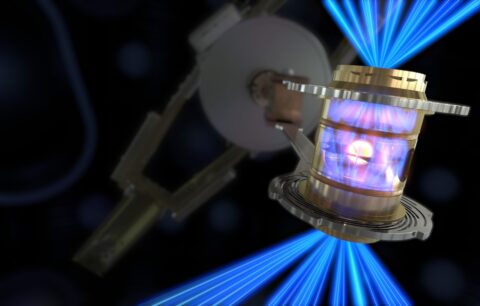
Conner Galloway and Alexander Valys have followed developments in nuclear fusion research since they were roommates at MIT some 20 years ago. For much of that time, it wasn’t the most exciting pastime: breakthroughs were few and far between, and commercial fusion remained perpetually on the horizon, always 20 years away from providing inexpensive, inexhaustible, and pollution-free power.
But then in August 2021, the two spotted some news that suggested fusion power was finally within reach. Scientists working on a certain type of nuclear fusion at the National Ignition Facility (NIF) had doubled their previous best result.
Though it went largely unnoticed in the popular press, Galloway and Valys knew it marked a turning point. “That was one of the key moments. It’s like, okay, now’s the time,” Valys told TechCrunch.
Spurred into action, Galloway started refining his plans for what would become Xcimer Energy, a startup he founded in January 2022. Valys joined that April, and since then the two have been quietly working with their team to draw up plans for a fusion power plant that they say has the best shot at providing commercial-scale power.
“The type of inertial fusion we’re pursuing has the best long-term economics,” Galloway said.
Xcimer is pursuing what’s known as inertial confinement fusion. It’s the same type used by the NIF, which proved in December 2022 that controlled nuclear fusion could produce more power than was required to initiate the reaction. In inertial confinement, a laser is fired on a small fuel pellet, compressing and heating it to the point where its deuterium and tritium atoms start fusing, releasing tremendous amounts of energy in the process.
But Xcimer has been pursuing what’s best described as a ground-up redesign of the underlying technology.
It starts with the laser: Xcimer’s design is newer and promises to be more powerful. Where the power of NIF’s system tops out at around 2 megajoules, the startup is targeting 10 megajoules for its commercial-scale design. What’s more, Xcimer’s design should be significantly cheaper to build and operate. It’s similar in principle to the kind that has been used for years in semiconductor manufacturing, and the way it focuses the laser beam is based on research performed as part of the 1980s Strategic Defense Initiative, sometimes called Star Wars.
While many inertial confinement proposals suggest shooting the laser at several fuel pellets per second, Galloway said Xcimer plans to fire one every few seconds.
The inside of Xcimer’s reactor will look a little different, too. The fusion explosions will occur inside a waterfall of molten salt instead of a steel-walled reactor. The flowing salt will absorb the energy of the reaction and help generate steam to power a turbine. The hellish-sounding waterfall has a nice side benefit, too, protecting the reactor walls from damage, something that’s a primary concern for other designs. “We don’t have to replace the first wall at all during the plant lifetime,” Galloway said. “It can last 30 years with one chamber.”
Despite being just two years old, Xcimer has a ten year timeline to get to a pilot plant that it says will prove its commercial-scale ambitions aren’t just theoretical.
For the next two years, the company is building a demonstration-scale version of its laser system, which the company calls Phoenix. Though this demo won’t hit 10 megajoules, it’ll be similar enough to prove the cost savings, Valys said.
To get through that phase, Xcimer has raised a $100 million Series A, the company exclusively told TechCrunch. The round was led by Hedosophia, with participation by Breakthrough Energy Ventures, Emerson Collective, Gigascale Capital, Lowercarbon Capital, Prelude Ventures and Starlight Ventures. The startup also has a $9 million milestone-based grant from the Department of Energy.
“That takes us through the demonstration of this entire prototype laser system and through our goals for further development of the technology and roadmap for the rest of the plant,” Valys said. “It also is more than enough for the initial phase of the DOE milestone program.”
The two friends are confident their ten-year timeline will work out. “This is proven science,” Galloway said. “It’s just a matter of building a big enough laser, cheap enough laser and efficient enough laser.”
